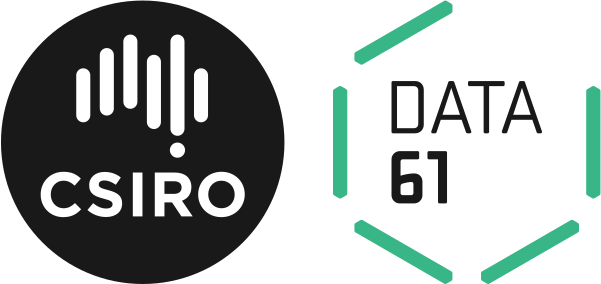waargonaut alternatives and similar packages
Based on the "JSON" category.
Alternatively, view waargonaut alternatives based on common mentions on social networks and blogs.
-
safe-json
Automatic versioning of JSON formats for Haskell data types (with backwards compatibility)
WorkOS - The modern identity platform for B2B SaaS

Do you think we are missing an alternative of waargonaut or a related project?
README

Waargonaut
Flexible, precise, and efficient JSON decoding/encoding library. This package provides a plethora of tools for decoding, encoding, and manipulating JSON data.
Features
Fully RFC compliant, with property based testing used to ensure the desired invariants are preserved.
Encoders and Decoders are values, they are not tied to a typeclass and as such you are not tied to a single interpretation of how a particular type "should" be handled.
No information is discarded on parsing. Trailing whitespace, and any formatting whitespace (carriage returns etc) are all preserved.
A history keeping zipper is used for Decoding, providing precise control of how you decode your JSON data. With informative error messages if things don't go according to plan.
Flexible and expressive Decoder & Encoder functions let you parse and build the JSON structures you require, with no surprises.
BYO parsing library, the parser built into Waargonaut does not tie you to a particular parsing library. With the caveat that your parsing library must have an instance of
CharParsingfrom the parsers package.Generic functions are provided to make the creation of Encoders and Decoders are bit easier. However these are tied to typeclasses, so they do come with some assumptions.
Lenses, Prisms, and Traversals are provided to allow you to investigate and manipulate the JSON data structures to your hearts content, without breaking the invariants.
The awesome work on succinct data structures by John Ky and Haskell Works is used to power the decoder. Providing the same zipper capabilities and property based guarantees, but with all the speed and efficiency capabilities that succinct data structures have to offer.
Example
Data Structure:
data Image = Image { _imageWidth :: Int , _imageHeight :: Int , _imageTitle :: Text , _imageAnimated :: Bool , _imageIDs :: [Int] }Encoder:
encodeImage :: Applicative f => Encoder f Image encodeImage = E.mapLikeObj $ \img -> E.intAt "Width" (_imageWidth img) . E.intAt "Height" (_imageHeight img) . E.textAt "Title" (_imageTitle img) . E.boolAt "Animated" (_imageAnimated img) . E.listAt E.int "IDs" (_imageIDs img)Decoder:
imageDecoder :: Monad f => D.Decoder f Image imageDecoder = D.withCursor $ \curs -> do -- Move down into the JSON object. io <- D.down curs -- We need individual values off of our object, Image <$> D.fromKey "Width" D.int io <*> D.fromKey "Height" D.int io <*> D.fromKey "Title" D.text io <*> D.fromKey "Animated" D.bool io <*> D.fromKey "IDs" (D.list D.int) io
Zippers
Waargonaut uses zippers for its decoding which allows for precise control in how you interrogate your JSON input. Take JSON structures and decode them precisely as you require:
Input:
["a","fred",1,2,3,4]
Data Structure:
data Foo = Foo (Char,String,[Int])
Decoder:
The zipper starts the very root of the JSON input, we tell it to move 'down' into the first element.
fooDecoder :: Monad f => Decoder f Foo
fooDecoder = D.withCursor $ \cursor -> do
fstElem <- D.down cursor
From the first element we can then decode the focus of the zipper using a specific decoder:
aChar <- D.focus D.unboundedChar fstElem
The next thing we want to decode is the second element of the array, so we move right one step or tooth, and then attempt to decode a string at the focus.
aString <- D.moveRight1 fstElem >>= D.focus D.string
Finally we want to take everything else in the list and combine them into a single list of Int values. Starting from the first element, we move right two positions (over the char and the string elements), then we use one of the provided decoder functions that will repeatedly move in a direction and combine all of the elements it can until it can no longer move.
aIntList <- D.moveRightN 2 fstElem >>= D.rightwardSnoc [] D.int
Lastly, we build the Foo using the decoded values.
pure $ Foo (aChar, aString, aIntList)
The zipper stores the history of your movements, so any errors provide information about the path they took prior to encountering an error. Making debugging precise and straight-forward.
Property Driven Development
This library is built to parse and produce JSON in accordance with the RFC 8259 standard. The data structures, parser, and printer are built to satify the Round Trip Property:
Which may be expressed using the following pseudocode:
parse . print = id
This indicates that any JSON produced by this library will be parsed back in as the exact data structure that produced it. This includes whitespace such as carriage returns and trailing whitespace. There is no loss of information.
There is also this property, again in pseudocode:
print . parse . print = print
This states that the printed form of the JSON will not change will be identical after parsing and then re-printing. There is no loss of information.
This provides a solid foundation to build upon.
NB: The actual code will of course return values that account for the possibility of failure. Computers being what they are.
TODO(s)
In no particular order...
- [ ] improve/bikeshed encoding object api
- [ ] gather feedback on tests/benchmarks that matter
- [ ] provide testing functions so users can be more confident in their Encoder/Decoder construction
- [x] (feedback required) documentation in the various modules to explain any weirdness or things that users may consider to be 'missing' or 'wrong'.
- [x] (mostly) provide greater rationale behind lack of reliance in typeclasses for encoding/decoding
- [ ] provide functions to add preset whitespace layouts to encoded json.

